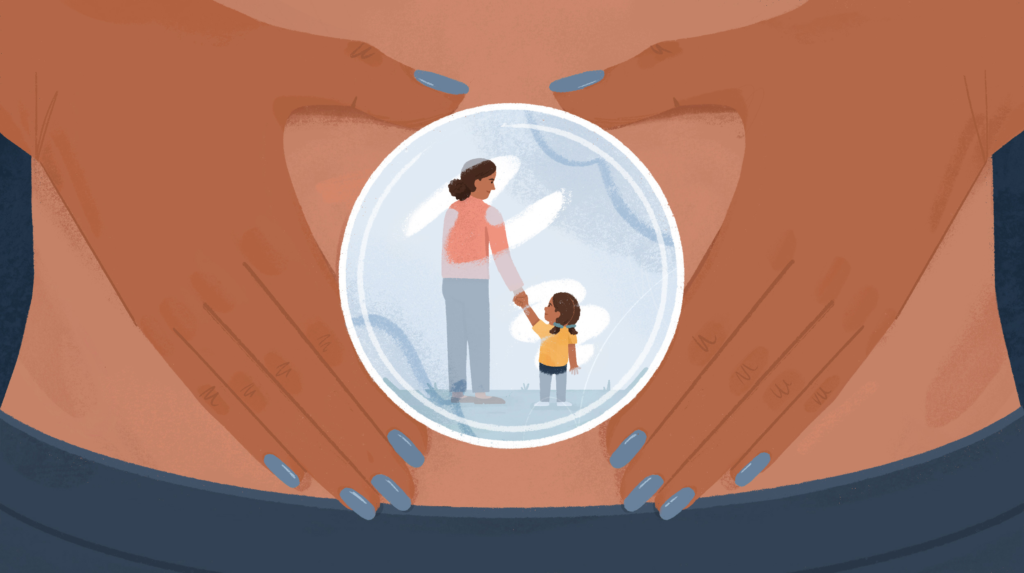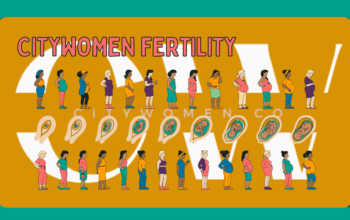
March 13, 2020 at 12:00AM by CWC
In the six years since I was diagnosed with both generalized anxiety disorder and panic disorder—what can I say, I’m an overachiever—I’ve tried just about everything to manage my symptoms. I’ve been in and out of therapy and took medication for a year, but ultimately decided to taper off the medication because I didn’t like the side effects. I’ve tested just about every CBD brand on the market. I’ve inhaled essential oils and experimented with all kinds of meditation styles, and I make it a point to work out daily, practice breathwork, and get on my yoga mat at least once a day. (That’s not even an exhaustive list.)
While most of these strategies have helped to some degree, I still have months where I’m plagued with heart palpitations, shortness of breath, dizziness, and unexplainable feelings of terror. So when I heard about a new tactic for soothing the nervous system and reducing anxiety from within—heart rate variability training, or HRV for short—I had nothing to lose by giving it a try.
HRV has been buzzy in the fitness world for the past few years, with devices such as the Apple Watch and Whoop tracking it as a measure of fitness. “Heart-rate variability is the fluctuation of the length of heart beat intervals,” says cardiologist Roshini Malaney, DO, of Manhattan Cardiology. (Translation: It measures the variation in time between heart beats.) A higher heart-rate variability score means that there is more variation in the length of time between heart beats, which is a sign of a spry heart. Meanwhile, a low HRV score is a sign that the body is stressed.
HRV isn’t just helpful for knowing when you need to take a rest day after a workout—it’s also an indicator of how well your nervous system reacts to stress. “HRV represents the ability of the heart to respond to a variety of physiological, environmental stimuli,” Dr. Malaney says. “It’s an important marker of psychological well-being, [as well as] general cardiovascular health.”
ADVERTISEMENT
ADVERTISEMENTKate Spade Autumn/Winter Sale |
According to clinical psychologist Ty Canning, PsyD, high HRV is a sign that one’s sympathetic (“fight-or-flight”) and parasympathetic (“rest-and-digest”) nervous systems are balanced. This means that a person is able to stay relaxed when they aren’t in a life-or-death situation; their heart isn’t beating rapidly all the time. “When we are stressed, we lose the balance and the sympathetic nervous system takes over,” he says. “[Physical] stress and anxiety are a two-way street—your body responds to your mental state, but your mental state also responds to your body.”
Dr. Canning notes that a number of different mental health conditions are associated with low HRV, from PTSD, panic disorder, generalized anxiety disorder, and social anxiety to depression, schizophrenia, bipolar disorder, and phobias. “Being able to tune in to and influence your HRV could have some pretty significant implications for mental health—not just with anxiety but all these other disorders,” Dr. Canning says.
Sleep, exercise, diet, and stress management techniques can all impact HRV for the better, but one of the fastest ways to increase it in high-stress moments is through controlled breathing—with a specific focus on lengthening the exhale. “When we breathe out, our heart rate decelerates. This deceleration increases heart-rate variability, which activates our parasympathetic nervous system [and takes us out of fight-or-flight],” says Dr. Canning.
Of course, it’s not always easy to remember to breathe in a certain way, especially in the midst of a particularly busy day. So to help optimize my own HRV, I tested out a wearable device called Lief. A little bigger than a credit card, the $299 heart monitor connects directly to the abdomen with sticky conductive patches—like supersized versions of the ones that link to an EKG machine in the hospital—and sends HRV data to a smartphone app. When it detects low HRV, the Lief repeatedly vibrates to prompt the user to lengthen their exhales, stopping only when HRV is back in the normal range. “Over time, this breathing style gets more and more entrained and the body starts to respond faster with fewer breaths,” says Dr. Canning, who notes that this can start to happen after just one week of training.
With my therapist’s blessing, I attached the Lief just underneath my left boob and began my weeklong experiment.
My experience with using heart rate variability training for anxiety
The first time my Lief synced up with its companion app, I was proud to see that my HRV was on the high end. There are five “zones” into which heart rates fall on the Lief app—tense, alert, neutral, calm, and restore—and mine was hovering around “calm”. But as I fixated on the numbers on screen, it quickly plummeted to “alert” and then “tense.” This automatically kicked off a guided breathwork session using the app, which prompted me to exhale while the Lief was vibrating and inhale when it was still. By the end of the three-minute session, my HRV was all the way up in the most optimal zone. Success!
The more I wore the Lief, the more I noticed patterns in my HRV. For instance, it was always worst in a few specific scenarios: while drinking my coffee in the morning, while eating lunch, while exercising, and when I felt mentally or physically tired. Dr. Canning says he wasn’t surprised that I was in “tense” mode while consuming caffeine in my PJs—even though, ironically, this is the part of the day that I tend to feel most relaxed. “Most people have a cortisol spike in the morning,” he explains, referring to the “stress hormone” that helps wake us up from sleep. “That caffeine-cortisol combo gets you totally ready to face the day, but it can also be the start of the anxiety spiral.”
He says that there’s also a good explanation for the fact that my HRV plummeted each day around my 12:30 p.m. lunch break—by which point I am usually starving. “Low blood sugar is linked with an increase in cortisol, and cortisol increase is linked with a decrease in heart-rate variability and an increase in stress and anxiety,” he says.
It was also really interesting to see when my HRV was at its highest—when chatting with coworkers on Slack, daydreaming in the car, cuddling with my dog, and meditating. I could even see how different work projects were affecting my stress and anxiety levels. For instance, my HRV stayed on the low end of the scale while writing a political article on a Friday afternoon. But it reached an all-time high while working on a fun copywriting project that put me into an energized, creative flow state.
Lief recommends aiming for 10 minutes of guided breathwork training each day. You can initiate a session yourself, but I found that I reached my quota through the automatic sessions that kicked in whenever my HRV was low. These didn’t always happen at the ideal time–for instance, it’s hard to match your breathing to the Lief when you’re in the middle of yoga, unless you want to completely fall out of sync with the rest of the class—but for the most part, I was able to stop what I was doing and focus on my breath until my HRV improved.
Did raising my HRV help with my anxiety?
After a week of using the Lief, I did notice that my heart-rate variability level was higher overall—I was spending more time in the “calm” and “restore” zones, and I was bouncing back much faster during times of tension. My anxiety was minimal for the whole week, but I can’t say for sure whether that was due to the Lief. I’d need to spend more time using it in order to make that correlation.
ADVERTISEMENT
ADVERTISEMENTSports Direct Free Delivery on All Orders! |
For me, the best part about using the Lief was getting to know some of my anxiety triggers, as I can now work to minimize them. For instance, I’ve been told by countless doctors to stop drinking coffee, but I’ve ignored them because I love it—and I figured that all of the yoga, meditation, and adaptogens in my life should balance out my one cup a day. But now I have actual data that shows caffeine is putting major stress on my body, and I’m planning to slowly cut back. I’ve also realized that I need to start eating a mid-morning snack to avoid my daily blood-sugar crash and ensuing anxiety spike, and that I need to start prioritizing activities that put me into a high HRV each day, like connecting with friends, being more intentional about the work projects I take on, and letting myself daydream.
This may all sound very obvious, but when you’re throwing everything at the wall in an effort to improve your mental health, it’s easy to forget about the basics. I now have a clearer, data-driven picture of which stress management techniques actually work for me and which ones aren’t doing me any favors. (Looking at you, high-intensity exercise.) Even more importantly, I can see that anxiety and panic might be more within my control than I ever thought—and that idea alone is helping me breathe easier.
This surprising trick helped one writer master her morning anxiety. And cultivating a few “safety signals” can be surprisingly effective at combatting stress.
Author Erin Magner | Well and Good
Selected by CWC

ADVERTISEMENT
ADVERTISEMENTUp to 30% off Gift Sets |







